I spotted my first strands of silvery hair when I was 24. They looked pretty, almost enchanted, like cobwebs in a fairy tale. My hair is dark, practically black, so the hairs sparkled like stars in the night sky. I didn’t do anything about the gray because that would be a concession to sexist beauty standards — one that, 18 years later, I still have not made.
When my sister Beth started her photo series Gray, I was thrilled. These portraits and accompanying interviews document Chicago-area women of different ages and walks of life who have had to decide whether to conceal or reveal their graying locks. Beth invites the women — from CEOs to nurse practitioners, from yoga instructors to marketing specialists — to consider their thoughts and feelings about this loaded signifier of beauty, value, attractiveness, and identity.
She began the project when her daughter noticed her roots growing in as her dye job faded. “Mommy, your hair is getting very gray,” Rose said. “Are you going to die?” “Yes,” Beth responded. “I will eventually die, but not because I stop coloring my hair.” This got Beth thinking about society’s unwillingness to let women reveal themselves aging naturally. Why do men get to be “distinguished” but women are told they look “tired” or like they’ve let themselves go? If silver can be foxy, why are female silver foxes so rare, and could they ever become more abundant?
The women in Beth’s photographs reflect on going gray within a complex network of social expectations involving friends, lovers, partners, bosses, coworkers, strangers, clients, and children. Their stories illuminate the universal: humans grappling with self-worth and appearance, gender and aesthetics, maturity and mortality.
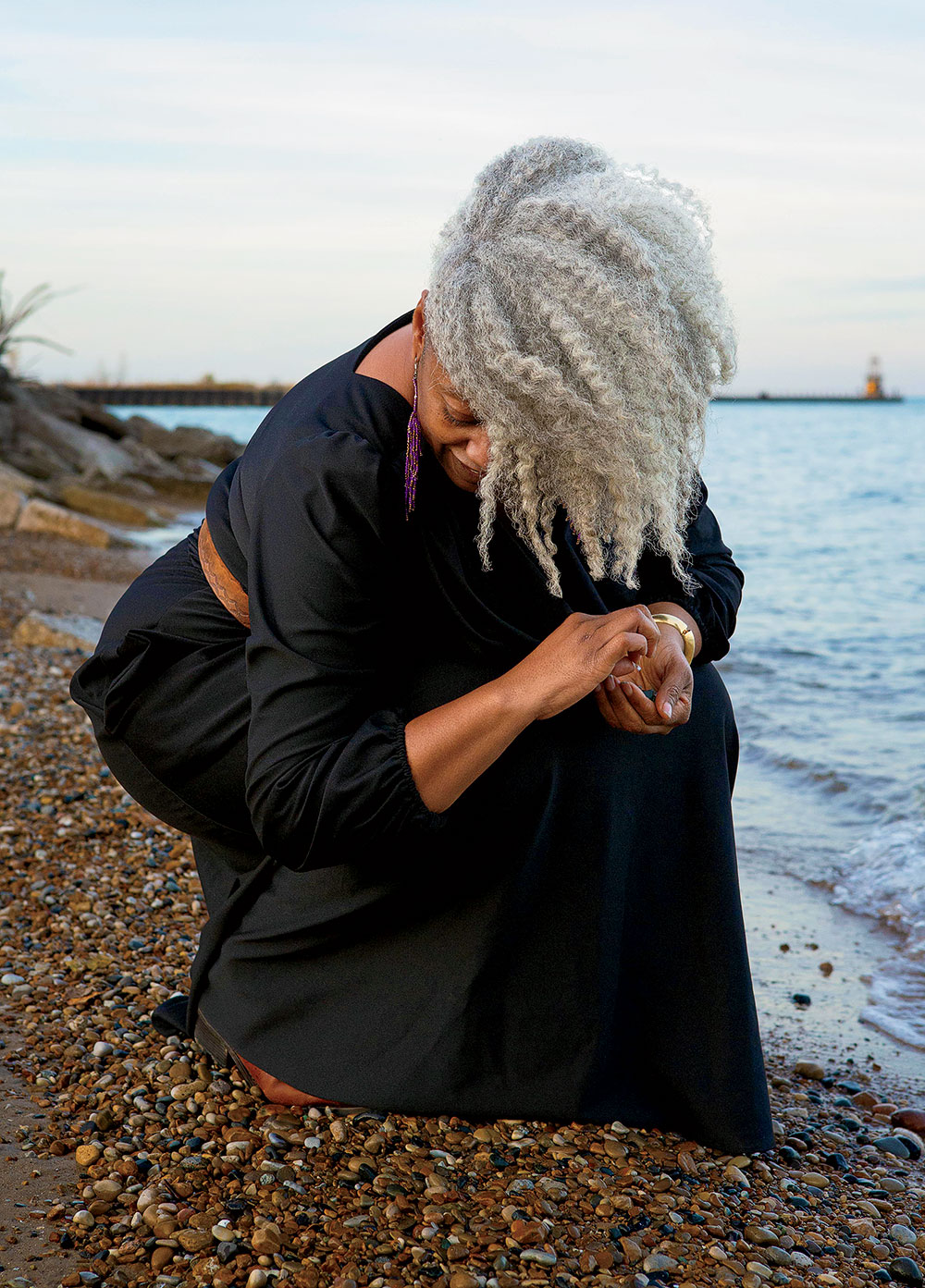
Sekile Nzinga, chief equity officer of Illinois, 51
“I went to a stylist on my 47th birthday, and she cut almost all my dyed hair out. I was scared at first, but it felt good — I felt surprisingly like myself. This came around the same time I came out as queer, so I jokingly say 2017 was the year I went ‘gay and gray.’ I was uncovering the last bits of authentic self. I am very comfortable with who I am becoming, and my gray hair is part of that journey.”
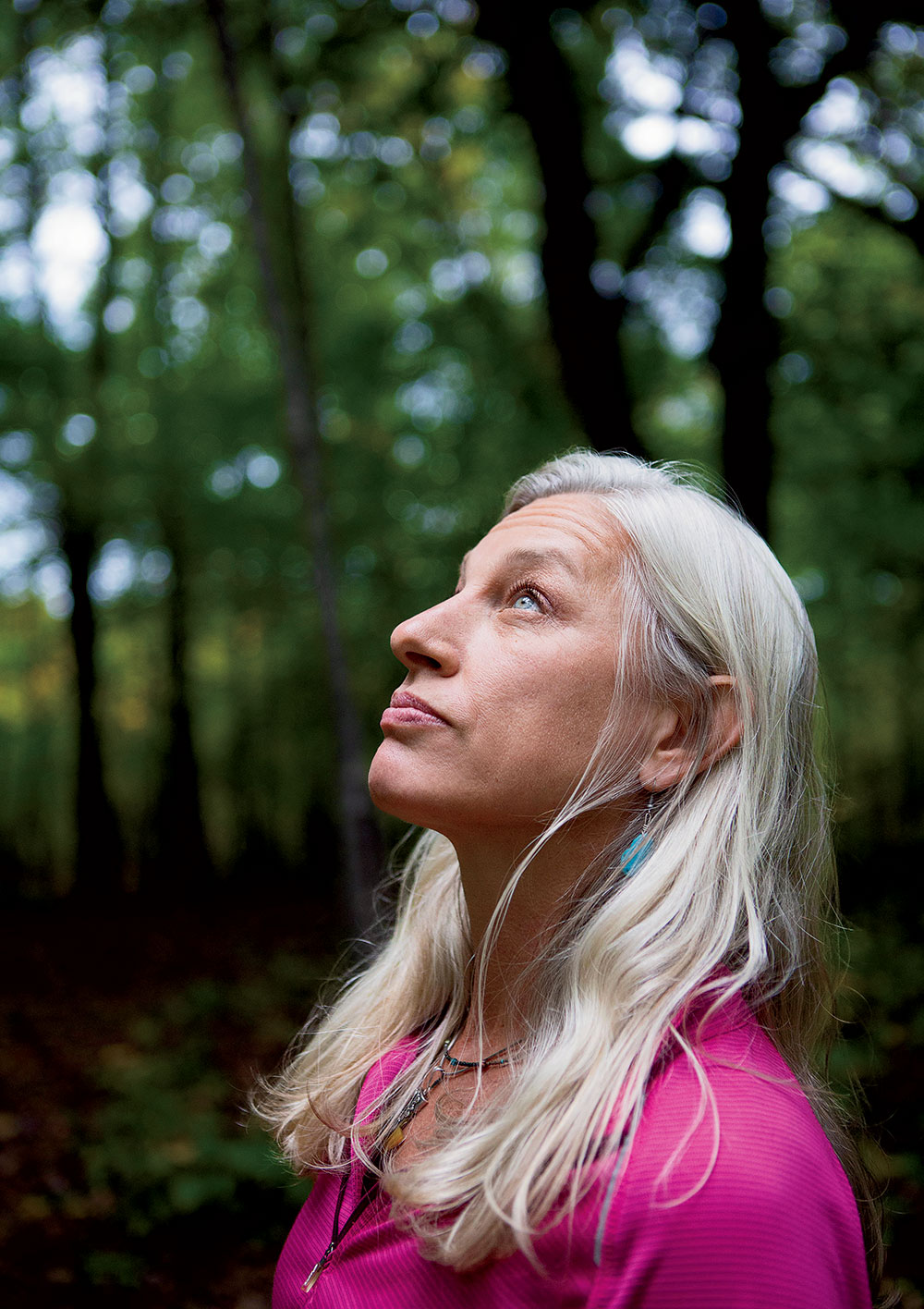
Kristina Isabelle, dancer and choreographer, 52
“Once I let my hair grow gray, I started to blend into the background. As a dance artist, that shift and awareness was powerful. My aging body may not be the body of the moment, but I do not need to be the center of attention, either. I observed others who let their hair grow gray during COVID, and I do see their age. I see the time that has passed, and then I know that I, too, look older. My relationship to graying is complicated and fluctuates between positives and negatives. For the most part, I love my gray hair.”
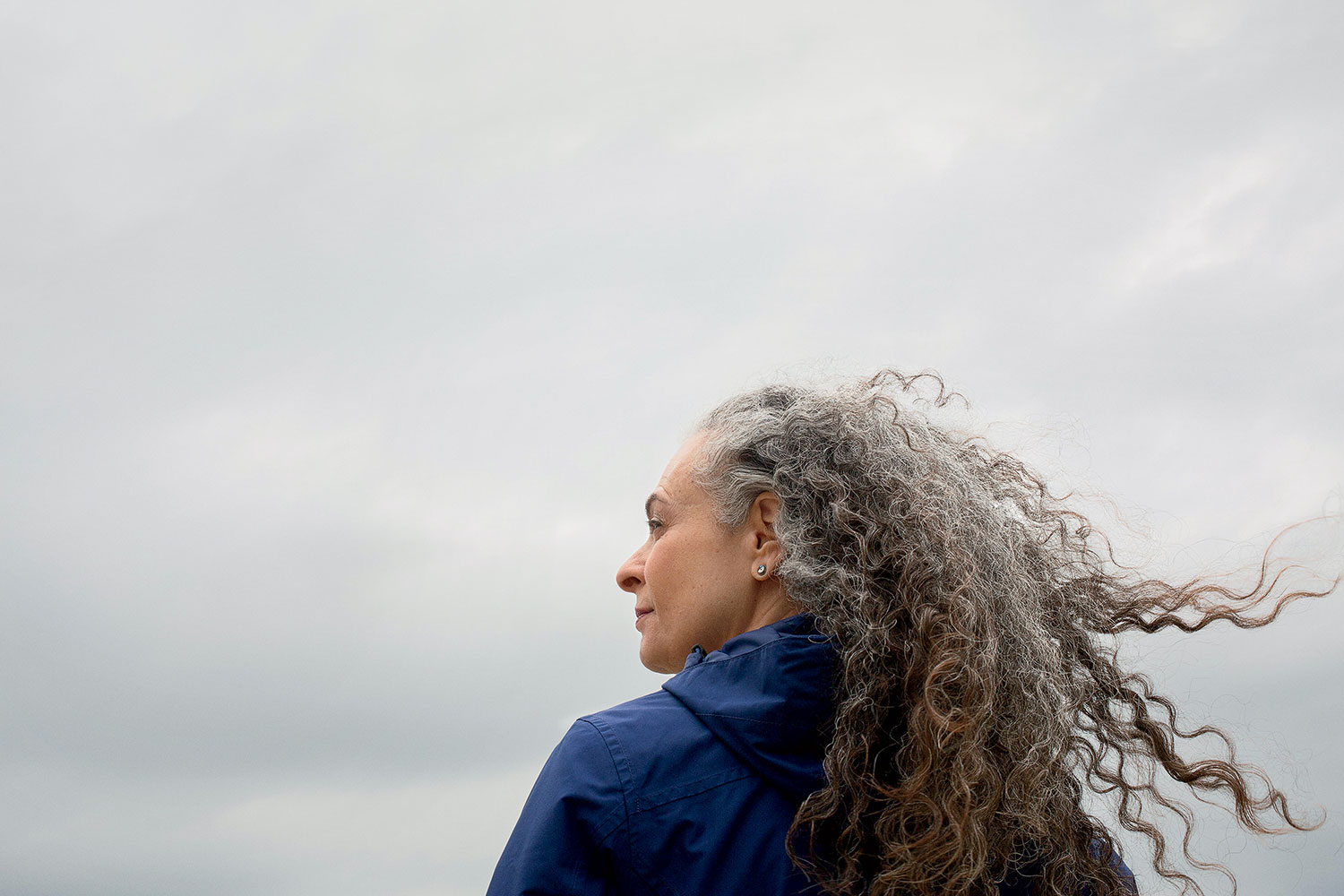
Gail Siegel, retired policy director for the Cook County clerk’s office, 66
“There’s pleasure in the transition: from golden toddler locks, to brownish childhood mop, to dark adult curls, to silvery streaks. I’m always surprised and delighted when someone admires my hair. I used to get a lot of attention for it, and I had forgotten that feeling. I am gratified when my friends decide, after looking at my hair, that they are going to stop coloring theirs. It’s happened several times. They always look better.”
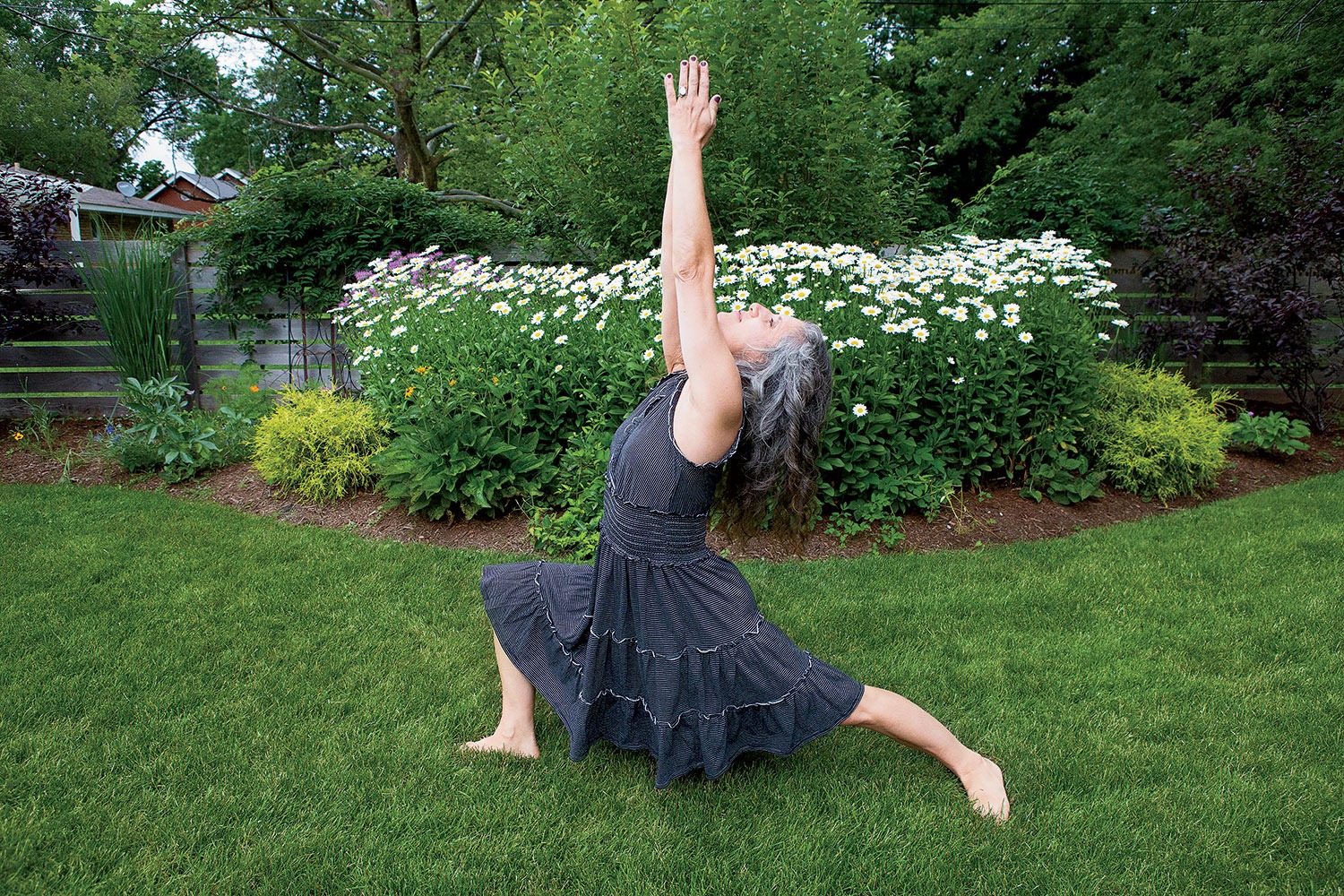
Maria Luisa Basualdo, yoga instructor, 53
“Old age can be beautiful, and it is worthy of respect. But it is not always respected. Now everyone wants a young, thin model instead of an experienced yoga instructor. In the past, I was told I was ‘lucky’ to have a job because [this gym] doesn’t hire ‘older people.’ I know instructors who dye their hair and even get plastic surgery to keep looking young and keep feeling secure in their jobs. I don’t want that. I can’t do that. This is who I am, and this is who I will be.”
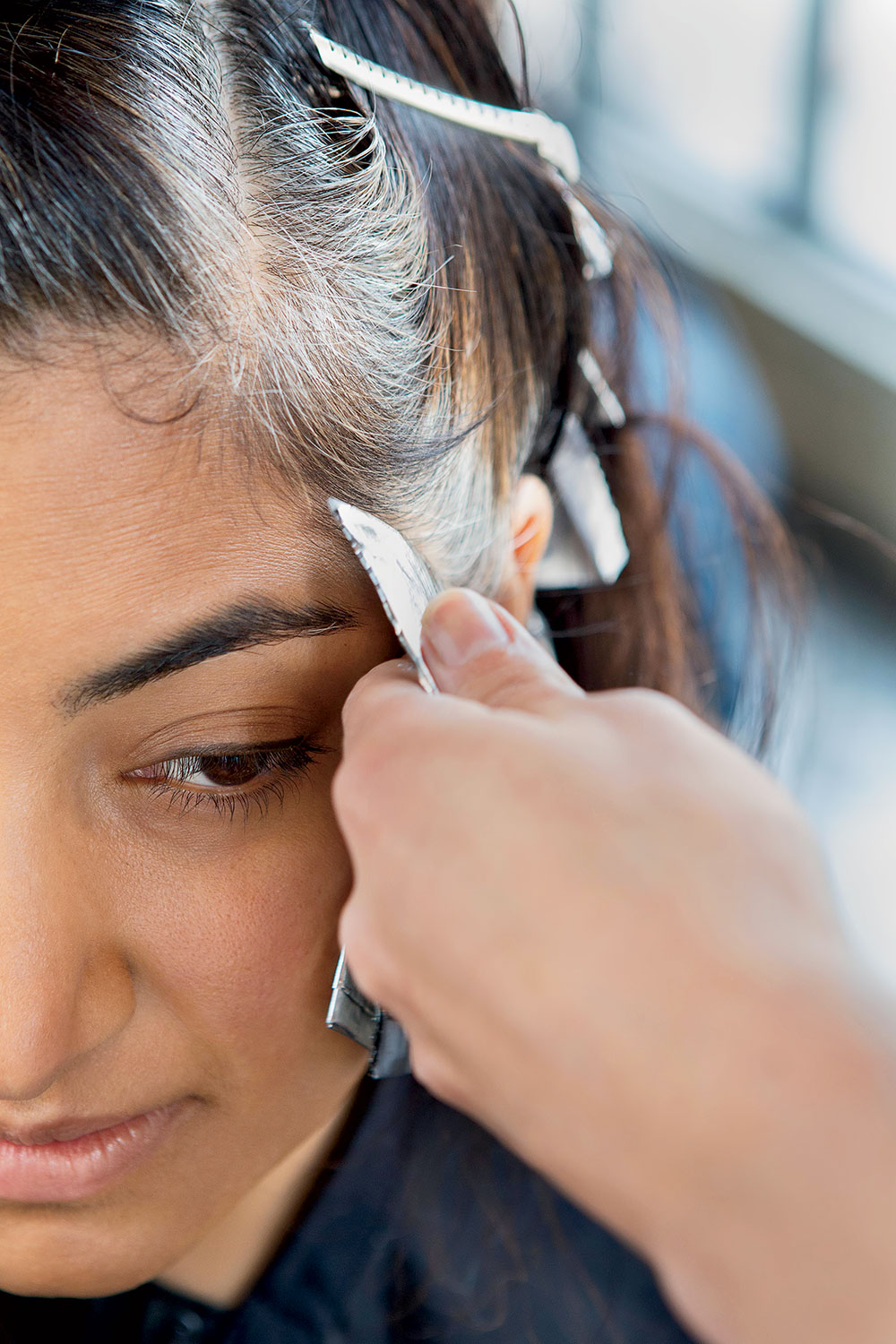
Sona Gajiwala Jones, health and wellness executive, 38
“I noticed about 12 years ago I was getting gray hairs and started to dye it immediately because it felt like the culturally appropriate thing to do. My parents went gray pretty early, and I grew up watching them dye their hair. It’s just part of life. I’m gray now because it’s easier. I got tired of the time, money, and ambient stress of one more thing to manage. I talked to my colorist about it for a full year before taking the plunge. She came up with a plan to help the transition not be so stark.”
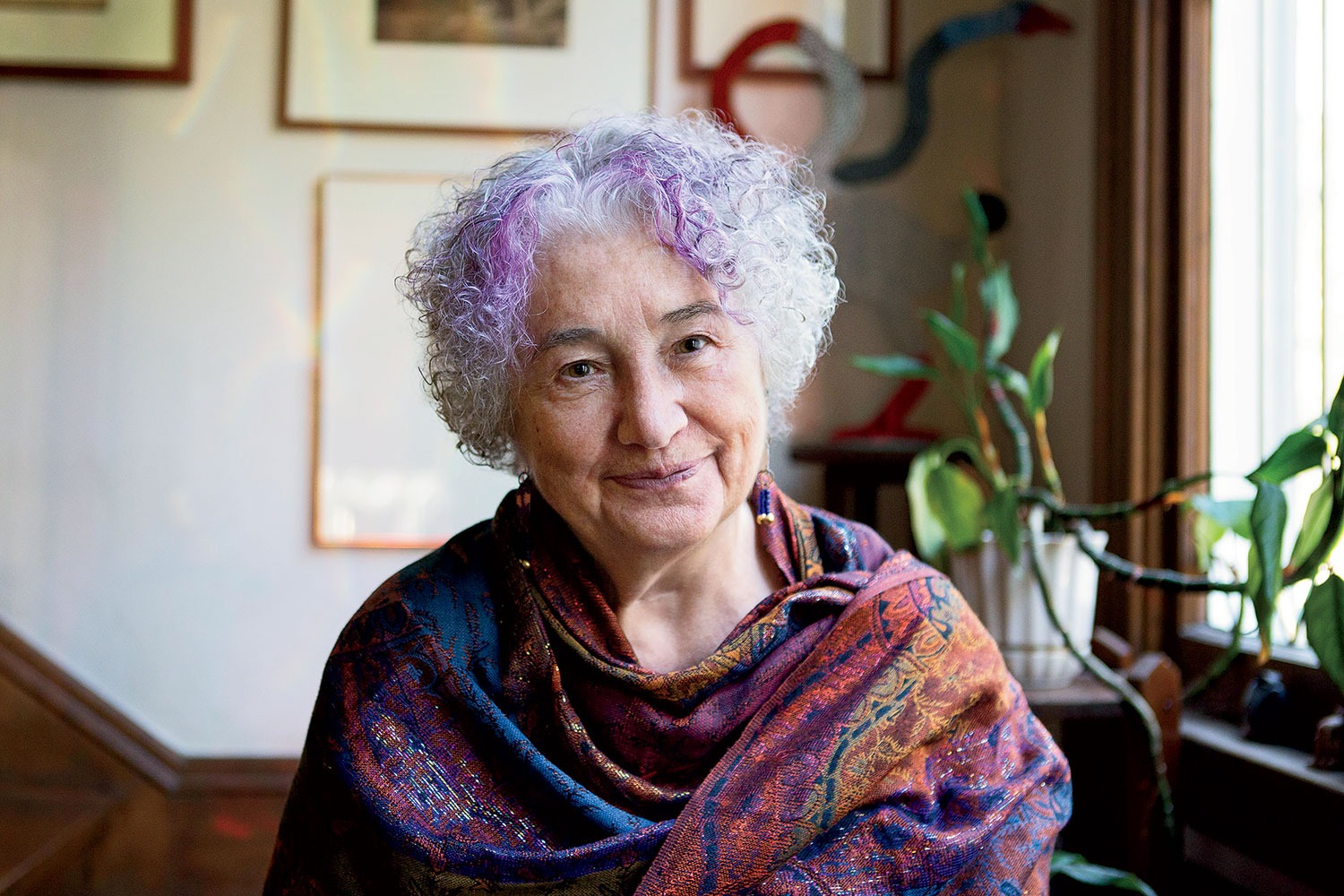
Jerri Zbiral, visual artist and curator, 73
“I started with a gray streak like my mom, and I would get a lot of compliments on it. I loved it as a conversation starter. But as my hair started to change completely, well, those conversations stopped, so I started with the purple streak. Hair has always been a focal point in my life. I tie it to strength and beauty, to identity, to success, to belonging or being excluded.”
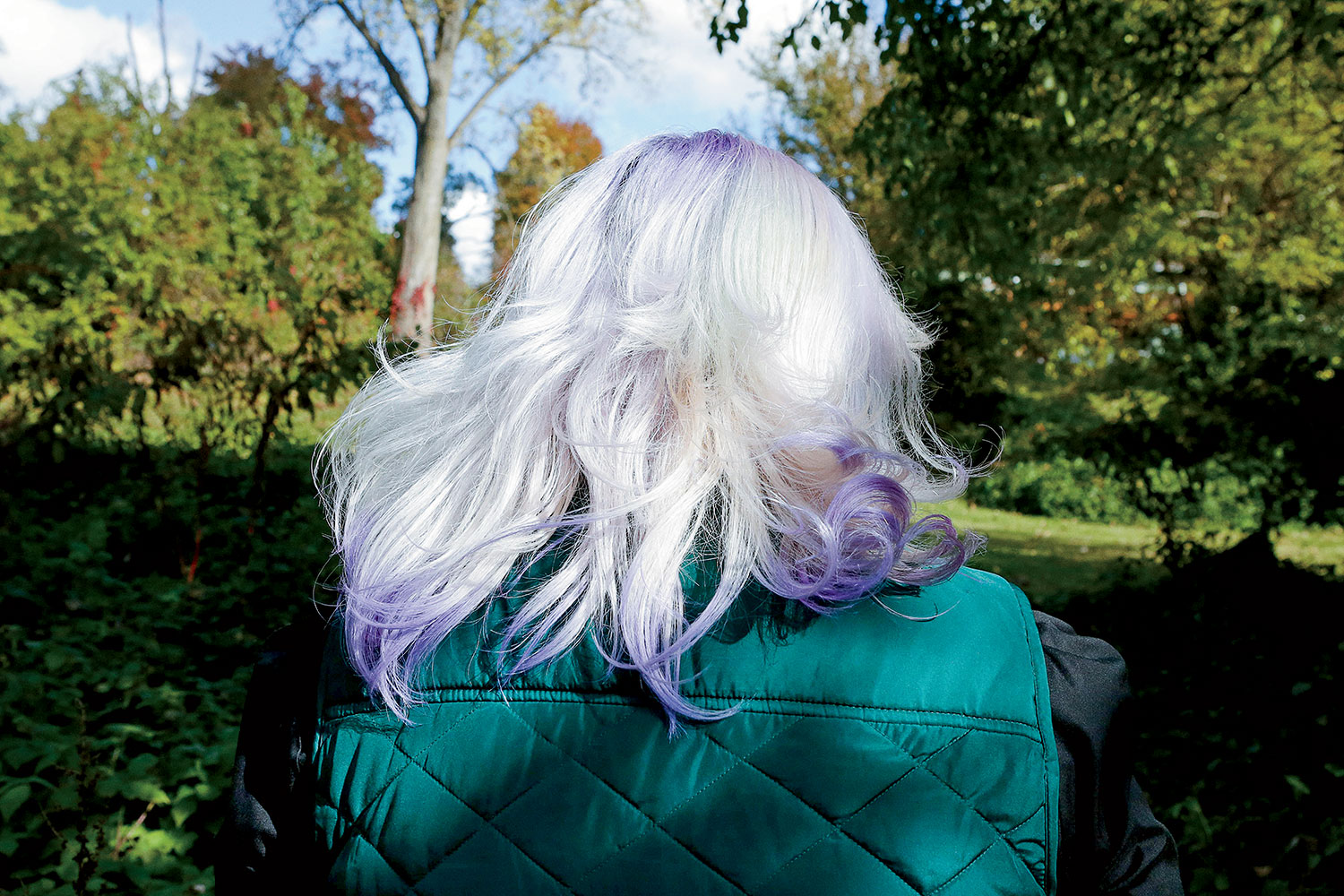
Laura Marie Panozzo, sculptor, 46
“About two years ago, I noticed a change in my internal dialogue. It went from ‘Girl, you look good’ to ‘Look at all this gray. Are you going to do something about it?’ Then, finally, this beautiful voice said, ‘Yeah, I’m going to do something about it. I’m going to let it all grow out!’ It was so, so hard in the beginning. I had a hard time believing this is what I look like. And then once it started to grow out, I was like, ‘Oh, I can’t believe how good I look. I am like a unicorn, I am mystical. Why did I ever let myself become ashamed of it?’ ”
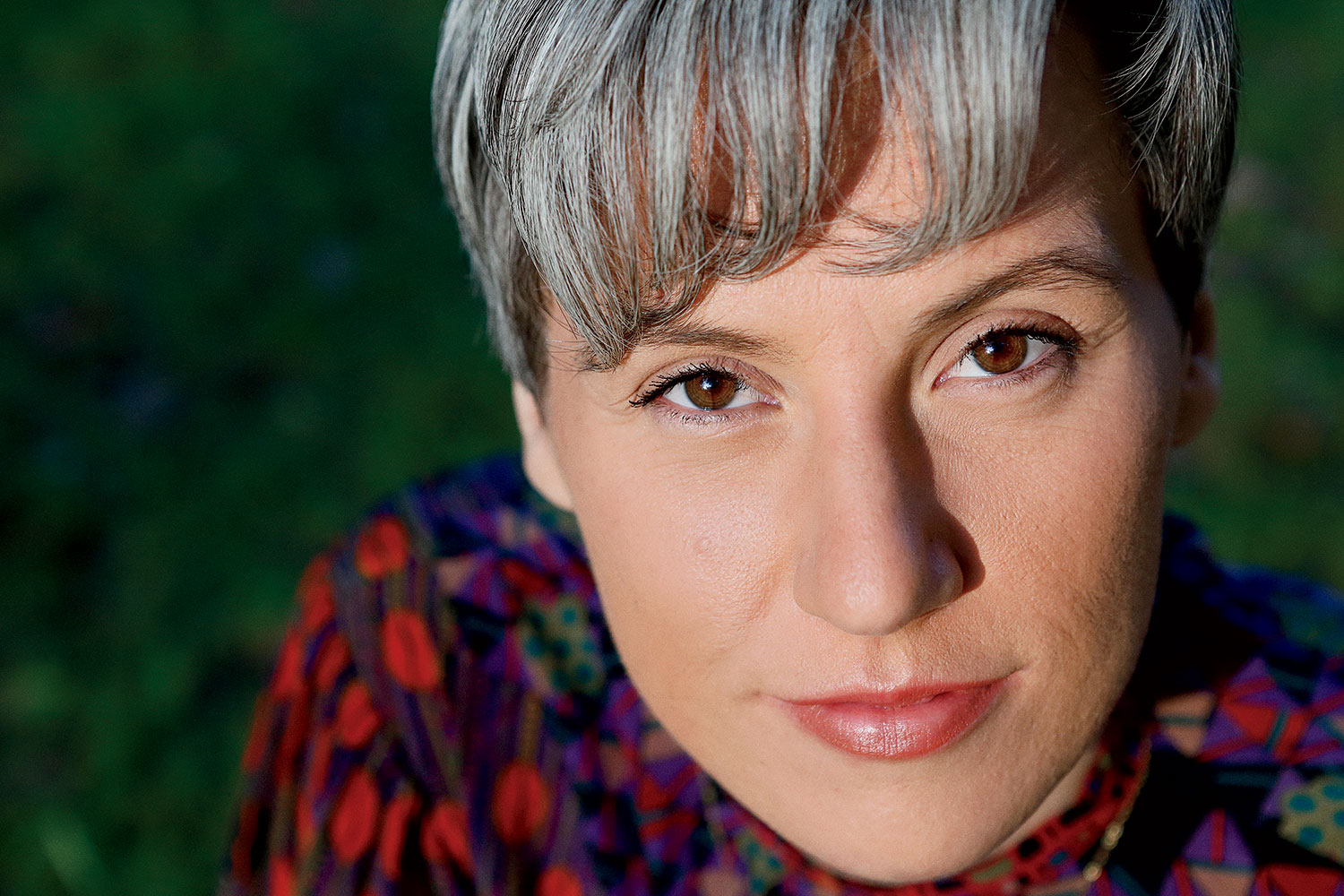
Natalie Johnson, art teacher, 30
“I started graying around 18, and my mom sort of slipped me some hair dye, which is funny to reflect on now. I just kept dyeing it. I thought that’s what I was supposed to do. Going gray felt like unlocking part of myself. A lot of me had wanted to fit in, to be mainstream. I didn’t like to be the center of attention. But now, with the gray, I feel like my style has changed. I was a T-shirt and blue jeans person before, but now I am more daring with what I wear. I am freer, more authentic. I’m not covering anything up anymore. I’m committed to gray. It’s become kind of my thing.”


